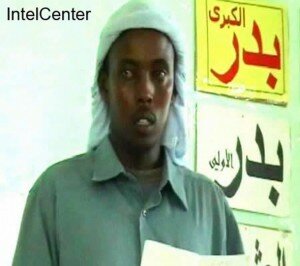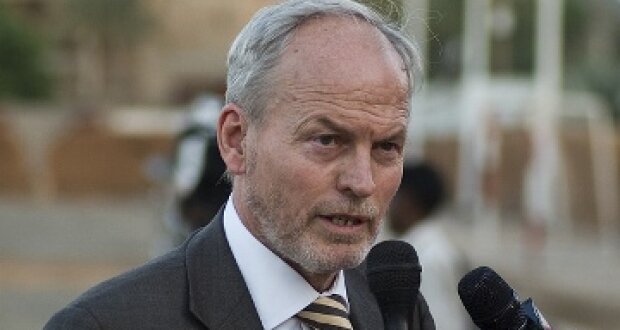Embassy Nairobi 2008-06-03 S E C R E T
SUBJECT: Somalia — Ayrow’s Demise
SUMMARY
——-
 1. (S/NF) The death of Aden Hashi Ayrow (Hawiye/Haber Gedir/Ayer) on May 1 will have several positive impacts: short-term disruption of terrorist operations of the Shabaab, set back efforts at reconciliation between the Shabaab andIslamic Court militias, and
1. (S/NF) The death of Aden Hashi Ayrow (Hawiye/Haber Gedir/Ayer) on May 1 will have several positive impacts: short-term disruption of terrorist operations of the Shabaab, set back efforts at reconciliation between the Shabaab andIslamic Court militias, and
potentially improve prospects for Somali reconciliation. It has also set off a leadership struggle for control of the Shabaab. The
removal of Ayrow, a committed killer who has terrorized his own clan and was ostracized by some clan elders, removes a hard-line obstacle to reconciliation between the Ayr and Prime Minister Nur Adde’s TFG, and gives some breathing space to once-threatened communities.
End Summary
———-
BACKGROUND
———-
2. (S/NF) Senior Al-Shabaab leader and al-Qaida associate Aden Hashi Ayrow was killed May 1 during a U.S. strike. In the early 1990s, Ayrow joined the military wing of Al-Ittihad Al-Islamiya (AIAI) and traveled to Afghanistan in 1997 for unspecified training. Ayrow
remained in Afghanistan for a year before returning to Somalia to participate in Jihadist activities, and returned to Afghanistan in
2001, reportedly meeting with Osama bin Laden. Ayrow emerged in the 2002/2003 timeframe as a firebrand extremist and he quickly became a rising figure in what eventually became the Shabaab. Mercurial and largely uncontrollable, he was feared for his ruthlessness and unpredictability.
3. (S/NF) Ayrow has been violently opposed to U.S. and western interests in East Africa. The Shabaab’s emergence as a terrorist
threat in Somalia is closely linked to Ayrow’s rise to power. During the course of 2005, Ayrow’s jihadist group emerged in Mogadishu as a violent destabilizing force. He has been linked to the killing of foreign aid workers, dozens of Somalis, and BBC journalist Kate
Peyton. He also was the figure largely responsible for the desecration of the Italian cemetery in Mogadishu. Ayrow’s al-Shabaab
faction has also conducted suicide bombings and anti-aircraft attacks targeting Ethiopian and Somali forces in Somalia. Ayrow was closely associated with East Africa Al-Qaida (EAAQ) operatives Harun Fazul and Saleh Nabhan, and now-deceased EAAQ cell leader Abu Talha Al-Sudani.
————————-
The Shabaab Lashes Out…
————————-
4. (S/NF) According to reporting, Shabaab operatives began retribution attacks against Ethiopian forces following Ayrow’s death.
Revenge attacks against Ethiopian and TFG forces are likely to continue and intensify in the short-term. The Shabaab has also
reportedly vowed to take revenge on American, Ethiopian, and Kenyan interests in the region. Reactions to Ayrow’s death differ, even
within the extremist movements. For some, particularly youthful fighters, he was Somalia’s Zarqawi, a figure to rally around. For
others, while an effective terrorist, he was bullheaded, difficult, and eventually replaceable. For some clan elders his passing is a
relief.
—————————
… and Leaders are Nervous
—————————
5. (C) Regardless of personal views toward Ayrow, the strike unsettled the Shabaab, giving some leaders immediate cause to wonder who would be next. XXXXXXXXXXXX told us that Ayrow’s demise has put known al-Shabaab leaders on high alert. XXXXXXXXXXXX said that after the Ethiopian National Defense Forces (ENDF) on May 5 killed Amin Barqadle (Hawiye/Hawadle), an extremist leader in the Hiraan region associated with both the Islamic Courts as well as the Shabaab, Robow executed several of his own close bodyguards under suspicion that they were offering information on his operations.
6. (C) The same MP told us that last week in Beletwein Robow and his militias entered the town to spend the night. All of the civilians
vacated the area for fear that they would be targeted in an air strike. Previously in such a situation the community would have
demonstrated at last nominal support for the Shabaab in exchange for guarantees for “security,” sometimes food, and/or other resources. The MP said that the strike on Ayrow has negatively influenced the relationship between Shabaab and local residents.
——————————-
Business/Civil Society Reaction
——————————-
7. (S/NF) Over the past several weeks contacts within the business and civil society communities, those both for and against the TFG, have reported there has been a quiet collective sigh of relief. Bakara market business leaders generally are pleased that Ayrow is
gone — his violent actions were a source of instability and disruption antithetical to the interests of business. Ayrow’s
unwillingness to abide by the guidance and decisions of traditional clan (Hawiye) and sub-clan (Ayr) leaders was divisive and problematic for civil society efforts at reconciliation. While concerned about the possibility of revenge attacks onsoft targets, the consensus among civil society and business leaders is that Somalia is better off without Ayrow.
——————
Leadership Outlook
——————
8. (S/NF) Clan Dynamics and Leadership: Attacks by the Shabaab or associated militia are likely to continue, and there are various
individuals eligible to fill the void created by Ayrow’s death. However, while attacks will continue from radical Islamists and their
followers — whether individual cells or groupings that self-identify as Shabaab or as Islamic Courts’ militia — there is likely to be a
continued struggle over the leadership of the Shabaab. In the short-term, at least, this will have a negative impact on the
Shabaab’s effectiveness.
9. (S/NF) Ayrow, a Hawiye/Haber Gedir/Ayr, operated in Hawiye areas and those over whom he exercised leadership were primarily fellow clansmen. Likewise, the other clan ties of key Shabaab leaders remained significant. Muhktar Robow is a Rahanweyn/Mirifle/Leysan. He operates in the Bay region, the home of the Rahanweyn, and his fighters are likely also to be predominately Rahanweyn. Hassan al-Turki, who is the in Jubas, is a Darod/Absame/Ogadeni, and he too operates in the territory of and with followers from his clan. Robow was the first in the media after Ayrow’s death, a move viewed by some as an effort to stake out a leadership claim, and he has since tried to exert greater overall control.
10. (S/NF) However, while Robow and Turki may view themselves as the rightful heirs to take over from Ayrow, neither are Hawiye, and it is the Hawiye, and particularly the Hawiye/Haber Gedir/Ayr, who have primarily been the leading force in the armed opposition to the TFG. The current struggle in Somalia is largely a struggle over control of Mogadishu, and in turn the struggle over Mogadishu is primarily a conflict about what many Hawiye view as a Darod-led TFG trying to re-assert Darod dominance over a primarily Hawiye city. While it is not clear who it would be, a Hawiye extremist would likely challenge either Robow or Turki for leadership of the Shabaab, and this process will take time to resolve. In the interim, the northern (Galgudud and Hiraan regions) Hawiye-led military operations of the Shabaab have been set back by Ayrow’s death.
11. (S/NF) Shabaab versus Islamic Courts’ Militia : Just prior to his death Ayrow had met with Yusuf Mohamed Siad “Indha Adda,” a fellow Ayr clan member, and the former Council of Islamic Courts (CIC) head of security, and nominal head of militias. Presumably Indha Adde and Ayrow were discussing “reconciliation” between the Shabaab and the CIC militia and how they might collaborate more closely. The death of Ayrow complicates that effort. In addition to Ayrow’s removal by the U.S., our listing of the Shabaab as a terrorist organization also has the potential to strengthen the attractiveness to recruits of the CIC militia over the Shabaab, and thereby hurt rather than help efforts at cooperation.
——-
Comment
——-
12. (SBU) We are urging President Yusuf and Prime Minister Nur Adde to seize whatever opportunity results from Ayrow’s death to intensify reconciliation efforts.
RANNEBERGER
No Comments so far. Feel free to join this conversation.
Leave A Response






